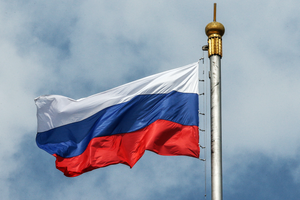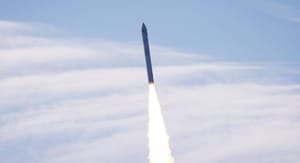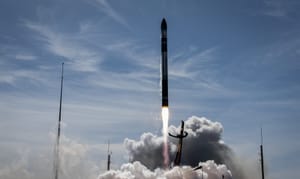
Disclaimer: This article was written on the 29th of October 2023 so some information may be outdated.
This article is intended as a general explanation of Roscosmos, its International Space Station activities, operational orbital launch vehicles, and its spacecraft for International Space Station activities.
Roscosmos
Roscosmos is a Russian state-run aerospace corporation and was founded on the 25th of February 1992. The corporation is headquartered in Moscow and has a believed annual budget of 154 billion Russian Roubles, or 1.92 billion United States dollars (this budget figure is from 2021 and uses the exchange rate as of the 2nd of September 2023).
Roscosmos has its main mission control center in the city of Korolyov, near Moscow, and trains its cosmonauts at the Yuri Gagarin Cosmonaut Training Center in Star City, also near Moscow. The agency currently operates a handful of orbital rocket launch sites. These sites are; Baikonur Cosmodrome in Kazakhstan, Vostochny Cosmodrome in the Russian far east, and Plesetsk Cosmodrome in northwestern Russia.

Russian Orbital Segment of the International Space Station
Roscosmos operates the Russian Orbital Segment on the International Space Station. The Russian Orbital Segment consists of modules constructed and operated by Roscosmos. Roscosmos owns all of the modules in the segment except for Zarya which was United States funded. The Russian Orbital Segment handles the guidance, navigation, and control of the International Space Station.
The first module to be launched for the Russian Orbital Segment was Zarya. Zarya is currently used for storage and provides docking ports Soyuz and Progress spacecraft. Zarya was funded by the United States and NASA and is a United States owned module.
The second module to be launched was Zvezda and acts as the International Space Stations service module. The module provides living space for the crew and docking ports for Soyuz and Progress spacecraft. The module also contains the International Space Station’s main engine system.
The third module to be launched was the former Pirs module. The module used to be the airlock for the Russian Orbital Segment and stored extra-vehicular activity spacesuits. It was undocked on the 26th of July 2021 and destructively burned up upon re-entering the Earth’s atmosphere.
The fourth module to be launched was the Poisk module. Poisk is an airlock for the Russian Orbital Segment and provided redundancy when Pirs was attached.
The fifth module to be launched was the Rassvet module. Rassvet is used for cargo storage and has a docking port for visiting Soyuz and Progress spacecraft.
The sixth module to be launched was the Nauka module, also called the Multipurpose Laboratory Module. Nauka is the main laboratory of the Russian Orbital Segment and was originally built as a backup for Zarya in the late 1990’s. Nauka occupies the same port as the former Pirs module.
The seventh module to be launched was the Prichal module. Prichal is attached to the end of Nauka and has five docking ports where visiting Soyuz and Progress spacecraft can dock.

Russian operational orbital launch vehicles
Roscosmos currently has a handful of operational orbital launch vehicles to enable Russia to launch all of its satellites and spacecraft domestically. Some of Roscosmos’ rockets have older variants dating back to the days of the Union of Soviet Socialist Republics.
The newest of these is the Angara family of orbital rockets. The least capable version of Angara is Angara 1.2. Angara 1.2 can launch 3,500 kilograms into low Earth orbit or 2,400 kilograms into sun-synchronous orbit. Angara 1.2 made its first flight on the 9th of July 2014. The most capable version of Angara is Angara A5. Angara A5 can launch up to 24,000 kilograms into low Earth orbit or up to 7,500 kilograms into geosynchronous transfer orbit. Angara A5 made its first flight on the 23rd of December 2014.

The oldest rocket that is used by Roscosmos is Proton-M. Proton-M made its first flight on the 7th of April 2001. Proton-M can launch up to 23,000 kilograms to low Earth orbit or 6,920 kilograms to geosynchronous transfer orbit or 3,250 kilograms to geosynchronous orbit.

Roscosmos also operates the Soyuz-2 family of rockets. The first Soyuz-2 to fly was the Soyuz-2.1a and made its first flight on the 8th of November 2004. Soyuz-2.1a can launch up to 7,800 kilograms to low Earth orbit or 2,810 kilograms to geo-synchronous transfer orbit or 4,230 to sun-synchronous orbit. Soyuz-2.1a is also rated to launch crew. The second Soyuz-2 to fly was the Soyuz-2.1b and made its first flight on the 27th of December 2006. Soyuz-2.1b can launch up to 9,000 kilograms to low Earth orbit or 3,250 kilograms to geo-synchronous transfer orbit or 4,900 kilograms to sun-synchronous orbit. Soyuz-2.1b is also rated to launch crew. The third Soyuz-2 to fly was the Soyuz-2.1v and made its first flight on the 28th of December 2013. Soyuz-2.1v can launch up to 2,800 kilograms to low Earth orbit and is the least capable version of Soyuz-2.

Russian operational spacecraft for the International Space Station
Roscosmos currently operates two spacecraft for sending crew and cargo to the International Space Station. Both of these spacecraft have older variants dating back to the days of the Union of Soviet Socialist Republics.
For sending crew to and from the International Space Station Roscosmos used the Soyuz spacecraft, not to be confused with the Soyuz series of launch vehicles. The Soyuz spacecraft consists of three modules; the orbital module, the descent module, and the instrumentation and service module. The orbital module is used to give the crew extra space once on orbit and to store cargo. The descent module is where the crew are during launch and landing is the only part of the spacecraft that survives re-entry into Earth’s atmosphere. The instrumentation and service module is where the spacecrafts main engines are as well as its fuel. The solar panels to generate power for the spacecraft are also attached to the instrumentation and service module.

For sending cargo to the International Space Station Roscosmos uses the Progress spacecraft. Progress can send up to 2,400 kilograms of cargo to the International Space Station. Progress is also used to boost the orbit of the International Space Station. Progress consists of a pressurized section, that can be accessed by crew once docked, a fuel compartment, to store extra fuel to boost what it's docked to, and a propulsion module, which is used to change the spacecraft orbit once in space. Progress cannot survive re-entry into the Earth’s atmosphere.




